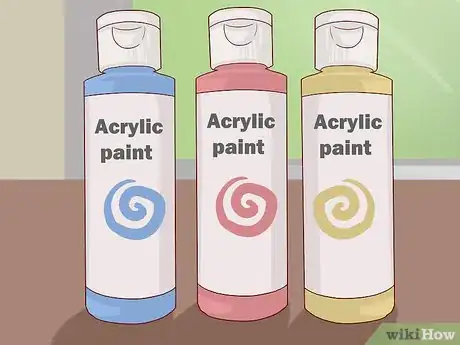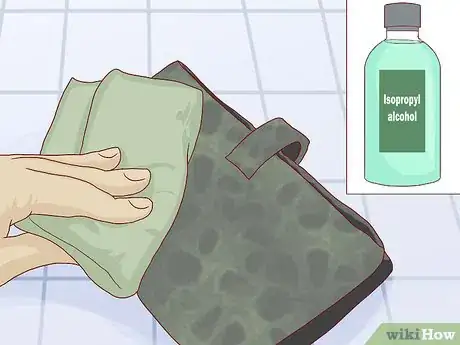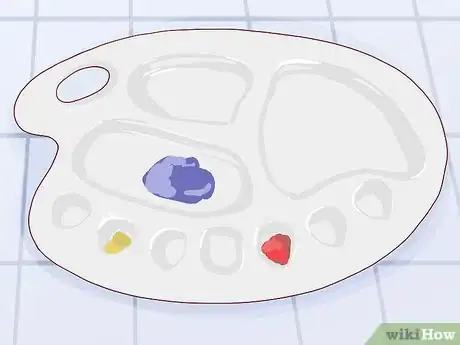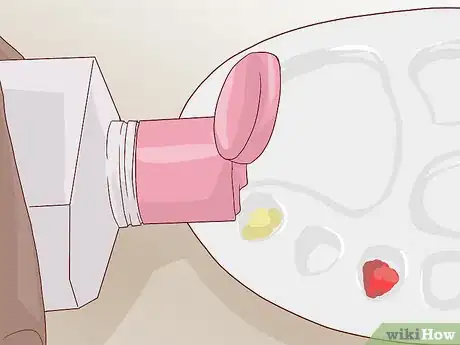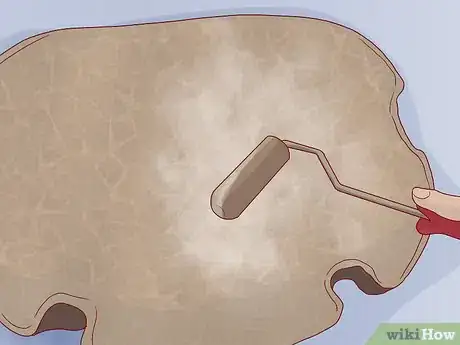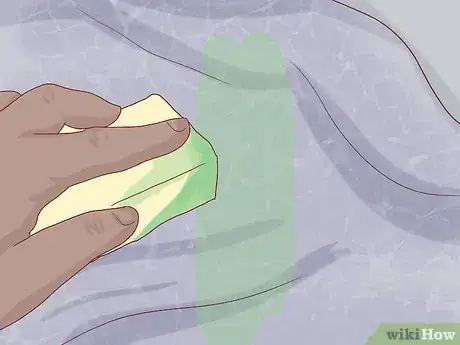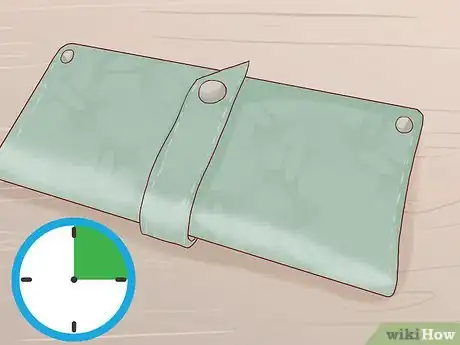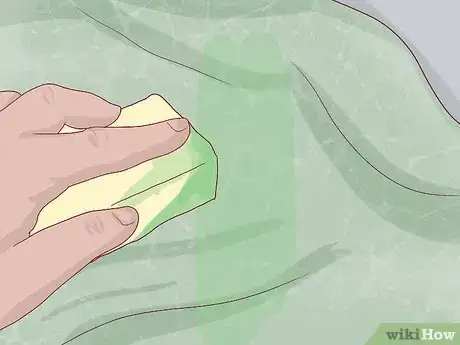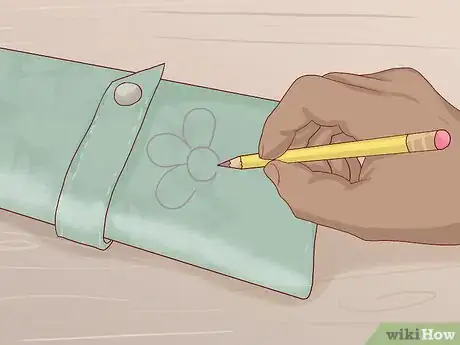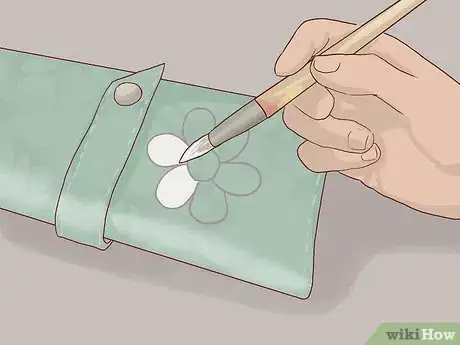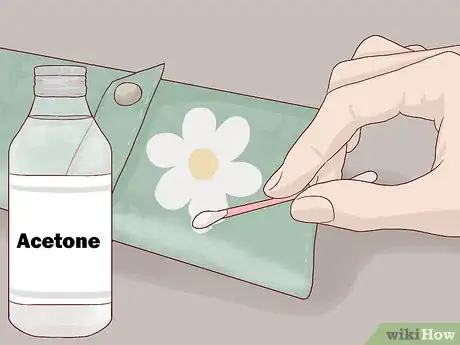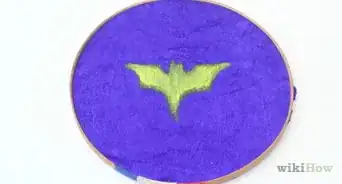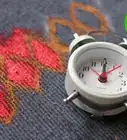This article was co-authored by Tanglewood Sue. Tanglewood Sue is a DIY and Upcycling Specialist and the Owner of Tanglewood Works out of Hyattsville, Maryland. With over nine years of experience, Sue specializes in upcycled painted furniture and other handmade, personalized, and sustainable goods. With her passion for art and reinvention, marketing experience, and Bachelor’s Degree in Broadcast Media, Sue has been able to create a business that not only provides quality pieces but empowers customers to create their works through her library of DIY tutorials and live demos as well as DIY supplies.
There are 11 references cited in this article, which can be found at the bottom of the page.
wikiHow marks an article as reader-approved once it receives enough positive feedback. In this case, 87% of readers who voted found the article helpful, earning it our reader-approved status.
This article has been viewed 466,854 times.
Artificial leather is a material that is commonly used for making upholstery, clothing, and accessories. It is typically made of plastic polymer, and it mimics the look and grain of real leather. Painting faux leather is a fun, inexpensive way to transform an outfit or spruce up an old accessory. After selecting a paint that will adhere to the material, and have fun painting an old faux leather chair or creating a design on a purse or skirt!
Steps
Selecting the Correct Paint
-
1Use acrylic paints. Acrylic paint can be found in a range of colors, including metallic and glittery shades, and it can be found at an arts and crafts store. It can be applied to many surfaces and it adheres well to faux leather. Acrylic paint does not fade as easily as other paints. It is also flexible, making it is less likely to crack over time.[1]
-
2Choose a leather paint. Leather paint is an acrylic-based paint that can be found at your local arts and crafts store. It comes in a wide variety of colors and is specifically formulated to adhere to both real leather and artificial leather. Leather paint is slightly more expensive than acrylic paint and can cost between $2 and $8 for a small bottle.[2] [3] Although it is more expensive, it is less likely to chip or fade over time.[4]Advertisement
-
3Select chalk-based paint. Chalk-based paint can add a shabby chic, distressed look to an accessory or a piece of furniture.[5] It adheres to many different surfaces and fabrics, making it a great choice for painting faux leather.[6] Many brands have created variations of chalky paint which can be found at an arts and crafts store or a home improvement shop.
Applying the Paint
-
1Clean the faux leather. Use a small amount of isopropyl alcohol to remove dust, dirt, grease, and wax from the faux leather. Dampen a cotton ball and wipe the entire surface of the material. A clean surface, free from dirt and grease, will allow the paint to strongly adhere to the faux leather.[7] [8]
-
2Use a paint palette. Prepare a paint palette so you can easily and efficiently access your desired paint colors as you work. You can buy a wooden or plastic artist’s palette at an arts and crafts store, or you can use a sheet of aluminum foil, a newspaper, or a magazine to house your paint.[9]
-
3Mix a small amount of acetone to your acrylic paint. Squeeze your desired paint colors onto your paint palette and add a few drops of acetone to the paint if you are working with acrylics. The acetone will thin the paint, making it smooth and easier to work with. Gently mix the paint and the acetone together with a small paintbrush. Be sure to only add a few drops or up to a teaspoon of acetone to your paint so that the paint does not become too watery.[10]
- Acrylic paint can dry quickly, so do not squeeze too much paint onto your palette at once.
- Gradually add a few additional drops of acetone if the paint is too thick.
-
4Apply a base coat for large surfaces. If you are painting a large surface in a uniform color, you will want to apply an even base coat of paint to the surface. Use the paint you selected for your project and apply it to the surface with a soft brush.[11] This is ideal if you are working with furniture or clothing.[12]
-
5Apply paint to one side of a sponge. Lightly press the sponge into the paint from your paint palette. Use long, vertical strokes to distribute the paint across the faux leather surface. Acrylic paint can dry rapidly, so you will need to work quickly if you are working with this medium.[13]
- Focus on creating long strokes when painting a large surface to avoid creating streaks. If you are working on upholstery, plan to paint only one side at a time.
-
6Allow the paint to dry. Before adding additional coats, the paint will need to dry completely.[14] Place the item in a safe place where it won’t be disturbed, damaged, or moved. Wait for about 15 to 20 minutes for the coat to dry completely.
-
7Enhance the color with additional layers of paint. After the first coat of paint has thoroughly dried, add another layer of paint to enhance the brightness and saturation of the color. As you add additional layers, be sure that the previous coat is dry before you apply another coating of paint.
Painting a Design
-
1Trace a design onto the surface. Use a pencil to lightly trace your desired design onto the leather. Do not press too hard, as this will indent the leather. The paint is also semi-transparent, so any bold lines beneath the paint may show through.[15]
-
2Fill in the design. Using a paintbrush, fill in your design with the desired colors.[16] Try to avoid creating thick layers of paint. A thick layer of paint will be more likely to crack over time. If your design has multiple colors, let each color dry before moving on to the next to avoid smudging the paint.
- Be sure to clean your brushes each time you select a new paint color to work with. Keep a small cup of water next to your workstation. Dip the paintbrush in the water before placing it into another color.
-
3Clean up mistakes with acetone. If you make a mistake while painting, use a small amount of acetone on a cotton ball or cotton swab to gently lift away the paint. Once the paint is successfully removed and the area has dried, you can continue painting.
-
4Let it dry. When you have finished painting your design, put it aside and let it air dry. The item should be secured in a safe place where it won’t be damaged or disturbed. The paint should dry within 15 to 20 minutes.
Expert Q&A
-
QuestionWhat kind of paint do I use on faux leather?
 Tanglewood SueTanglewood Sue is a DIY and Upcycling Specialist and the Owner of Tanglewood Works out of Hyattsville, Maryland. With over nine years of experience, Sue specializes in upcycled painted furniture and other handmade, personalized, and sustainable goods. With her passion for art and reinvention, marketing experience, and Bachelor’s Degree in Broadcast Media, Sue has been able to create a business that not only provides quality pieces but empowers customers to create their works through her library of DIY tutorials and live demos as well as DIY supplies.
Tanglewood SueTanglewood Sue is a DIY and Upcycling Specialist and the Owner of Tanglewood Works out of Hyattsville, Maryland. With over nine years of experience, Sue specializes in upcycled painted furniture and other handmade, personalized, and sustainable goods. With her passion for art and reinvention, marketing experience, and Bachelor’s Degree in Broadcast Media, Sue has been able to create a business that not only provides quality pieces but empowers customers to create their works through her library of DIY tutorials and live demos as well as DIY supplies.
DIY & Upcycling Specialist You can use leather paint, but it is a little more expensive than other alternatives.
You can use leather paint, but it is a little more expensive than other alternatives. -
QuestionHow do I get paint to stick to leather?
 Tanglewood SueTanglewood Sue is a DIY and Upcycling Specialist and the Owner of Tanglewood Works out of Hyattsville, Maryland. With over nine years of experience, Sue specializes in upcycled painted furniture and other handmade, personalized, and sustainable goods. With her passion for art and reinvention, marketing experience, and Bachelor’s Degree in Broadcast Media, Sue has been able to create a business that not only provides quality pieces but empowers customers to create their works through her library of DIY tutorials and live demos as well as DIY supplies.
Tanglewood SueTanglewood Sue is a DIY and Upcycling Specialist and the Owner of Tanglewood Works out of Hyattsville, Maryland. With over nine years of experience, Sue specializes in upcycled painted furniture and other handmade, personalized, and sustainable goods. With her passion for art and reinvention, marketing experience, and Bachelor’s Degree in Broadcast Media, Sue has been able to create a business that not only provides quality pieces but empowers customers to create their works through her library of DIY tutorials and live demos as well as DIY supplies.
DIY & Upcycling Specialist Clean and degloss the leather before you start painting so it accepts the base coat of paint.
Clean and degloss the leather before you start painting so it accepts the base coat of paint. -
QuestionCan I use chalk paint on leather?
 Tanglewood SueTanglewood Sue is a DIY and Upcycling Specialist and the Owner of Tanglewood Works out of Hyattsville, Maryland. With over nine years of experience, Sue specializes in upcycled painted furniture and other handmade, personalized, and sustainable goods. With her passion for art and reinvention, marketing experience, and Bachelor’s Degree in Broadcast Media, Sue has been able to create a business that not only provides quality pieces but empowers customers to create their works through her library of DIY tutorials and live demos as well as DIY supplies.
Tanglewood SueTanglewood Sue is a DIY and Upcycling Specialist and the Owner of Tanglewood Works out of Hyattsville, Maryland. With over nine years of experience, Sue specializes in upcycled painted furniture and other handmade, personalized, and sustainable goods. With her passion for art and reinvention, marketing experience, and Bachelor’s Degree in Broadcast Media, Sue has been able to create a business that not only provides quality pieces but empowers customers to create their works through her library of DIY tutorials and live demos as well as DIY supplies.
DIY & Upcycling Specialist Chalk paint works great on leather as long as you use multiple thin coats instead of a few thick coats.
Chalk paint works great on leather as long as you use multiple thin coats instead of a few thick coats.
Warnings
- Be aware that with frequent use, the paint may rub off of faux leather accessories.⧼thumbs_response⧽
Things You'll Need
- A faux leather item
- Acrylic paint, leather paint, or chalk paint
- Paint brushes
- Sponges
- A cup of water
- A paint palette
- Acetone
- Isopropyl alcohol
- Cotton swabs or cotton balls
References
- ↑ http://willkempartschool.com/what-is-the-difference-between-oils-vs-acrylic-paints/
- ↑ Tanglewood Sue. DIY & Upcycling Specialist. Expert Interview. 24 March 2021
- ↑ http://cosplaying-on-a-budget.tumblr.com/post/70459572452/painting-on-leather-tutorial
- ↑ https://www.seamwork.com/issues/2014/12/painting-leather
- ↑ http://www.apartmenttherapy.com/what-is-chalk-paint-where-to-buy-brands-diy-recipes-232410
- ↑ Tanglewood Sue. DIY & Upcycling Specialist. Expert Interview. 24 March 2021
- ↑ Tanglewood Sue. DIY & Upcycling Specialist. Expert Interview. 24 March 2021
- ↑ http://www.justpaint.org/painting-on-leather-with-acrylics/
- ↑ https://www.art-is-fun.com/artist-palette/#temporary
- ↑ https://www.youtube.com/watch?v=x1Ie-H54R9k
- ↑ Tanglewood Sue. DIY & Upcycling Specialist. Expert Interview. 24 March 2021
- ↑ https://www.youtube.com/watch?v=VenGg57JsKQ
- ↑ https://www.youtube.com/watch?v=VenGg57JsKQ
- ↑ Tanglewood Sue. DIY & Upcycling Specialist. Expert Interview. 24 March 2021
- ↑ http://www.dharmatrading.com/home/leather-painting-custom-kicks.html
- ↑ https://www.seamwork.com/issues/2014/12/painting-leather
About This Article
Before you paint faux leather, clean it with a small amount of isopropyl alcohol to remove dirt, dust, or grease. Then, mix some acrylic paint with a teaspoon of acetone, which will help it brush on smoothly. Depending on the size of your project and the desired effect, use a paint brush, roller, or sponge to apply your paint. Wait 15-20 minutes after applying the base coat before adding more coats. The amount of coats you apply depends on how rich your want your colors to be. For tips on how to paint a design, keep reading!
